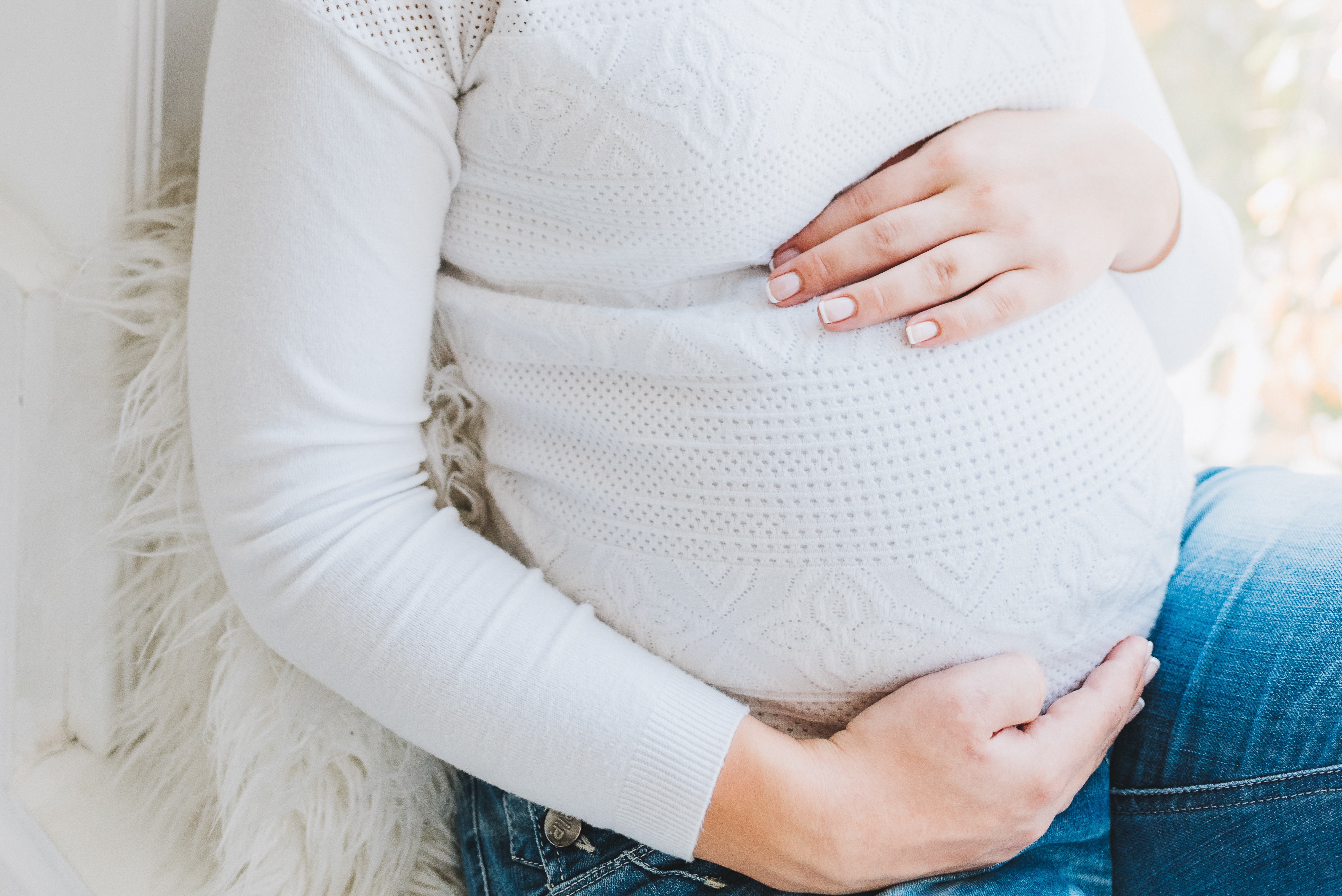6 Answers to the Question: What Is An Open Adoption?
Open adoptions have risen in popularity within the past two decades, presumably because of the adoption community becoming more open-minded about the birth family and adoptive family remaining in contact. You may be asking, “What is an open adoption?” Now that these types of adoptions have become more acceptable and more frequent, it is alluring to both birth families and adoptive families. Open adoption involves the birth and adoptive families working together to determine a system of contact and involvement with the child. This short guide will give you some pointers about open adoption.
What is an open adoption?
1. Open adoption can come in many different forms.
One of the benefits of choosing an open adoption is that there is not one way they have to be conducted. The expectant parents and the adoptive family can work out the system that they feel is best for the child. No two open adoptions look the same. You have the authority to determine what you want for your child, for the most part.
Despite their flexibility, however, open adoptions can be categorized into two general types.
- Fully open adoptions involve the birth parents being extremely active in the child’s life and often have in-person visits.
- Semi-open adoptions allow in-person visits, but the families communicate by phone/video call, text, email, or social media. Handwritten letters were common until the technology became more advanced.
So, the hard choice would be to choose whether or not you want to be able to visit your child as they grow. This does allow you to develop a close relationship with them, but can be stressful for some birth parents.
2. Open adoption allows the birth parents to have contact with their child after they are with their adoptive family.
The characteristic feature of open adoption is that the birth families and the adoptive families will communicate once the adoption is processed. The child will get to have a relationship with both families creating a unique and loving lifelong bond. If the child’s birth father and extended family members such as siblings, grandparents, or aunts/uncles are involved, they can also have visitations. However, this is an agreement that must be made by the birth mother. If family members express interest in wanting to participate in the open adoption, you should decide if you want them to be or not. Once you’ve made this decision, you can then approach the birth parents
Jessica Heesch, an adoptive mother of one, writes about her relationship with her son’s birth mother developed throughout the adoption process. She refers to her story as one that revolves around love and a trust-based relationship with the birth mother. Although she acknowledges that her journey has not been “all butterflies and cupcakes,” she emphasizes that all the challenges that were faced along the way were completely worth it. Throughout the birth mother’s pregnancy, there
The birth mother had a few requests, such as recording her voice so the baby would know his or her mother’s voice. Because she had talked to the baby for 9 months in the womb, it had gotten used to her voice; she was worried that if the baby didn’t recognize her voice it would become distressed. Heesch describes how much of an impact this had on her as she would have never thought to do something like that. She refers to the birth mother as “much wiser than her years and less selfish than I [the adoptive mother].”
Perhaps her most important statement in the article is: “…open adoption isn’t about me; it’s about love. The amount of love you have for your child. It changes everything.” Because, at the end of the day, this is what it’s really about. The focus of the adoption is placed on the child and doing what is best for them rather than on either set of parents and their desires. Too often, we can get caught up in the logistics of the adoption process and forget about the true meaning of why we’re doing it. At the end of the article, Heesch returns to the beginning of her story where she was completely opposed and even angry about having an open adoption. By the time the adoption process was completed and she began raising her son, she was immensely grateful that she proceeded with the open adoption. Without it, she, her son, or his birth mother might not have had the same experience.
3. Open adoption allows your child to see people who look like them.
In a closed adoption, once your child is placed with their adoptive family, they may never see a person that looks like them. If you’ve never thought about this, it can seem like an odd thing to even worry about when placing your child for adoption. However, seeing family members that share your genetics is life-changing for an adoptee.
By having an open adoption, this lack of sense of self will not be as large of a problem for your child. They will be able to see if they share your eyes, nose, body type, hair, voice, and the millions of other ways that we can identify ourselves in our relatives. Seeing yourself in your parents is something that most people take for granted and don’t even realize they do. Think about how often people are always telling parents “Oh. She looks so much like her mother/father,” “She has your eyes,” or “He acts just like his father did when he was that age.” It happens all the time. The most awkward situation for an adoptee is when someone who doesn’t know they’re adopted says they look like a member of their adoptive family; the parents then have to go through the entire “she’s adopted” talk, which becomes uncomfortable for everyone. Incidents like this and the many others that happen during an adoptee’s childhood ultimately put a large dent in their self-confidence, creating an unstable foundation for them to develop their own identity.
For some semi-open adoptions, pictures of the birth parents are sent regularly (and vice versa) or the child will be able to video chat with their birth parents.
4. Open adoption provides the child with better access to family history.
If you know anyone that is adopted, are adopted yourself, or anyone who has been through the adoption process before; you might know how difficult it is in most adoptions to obtain a complete medical and psychiatric history of the birth family for the child. For many agencies, the requirements for family history are not detailed or even in place at all. Although I was born and adopted in the mid-late 90s, assuming that things have vastly changed since then, I have no family history except for three recurrent conditions I have been able to track down from various family members.
For many adoptees, including myself, accessing their family history is like fighting an uphill battle. Many times physical and psychiatric health reports are not included, leaving adoptees with no idea of the risks for getting certain diseases and no genetic background to keep on record with a doctor’s office. Imagine walking into a doctor’s office and being asked to fill out intake paperwork, but having nothing but the information you know about yourself to put down. A packet that should have taken you 15 minutes has now been completed in less than five. Name, address, social security number, current medications, past conditions or surgeries, any allergies to medications…done. Now you have to approach the receptionist with empty paperwork, only to be asked “Are you sure you’re through? I think you missed a few pages…”. As someone who has experienced this, I can say it is that if given the chance, I would have obtained my family health history at any cost.
If you do choose an open adoption, providing an accurate family health history for your child is one of the best things you can do for them as an expectant parent. It tells your child that you care about their health and well being. Most importantly, discussing family history is not limited to health; educating your child on their culture, their history, and their ancestors can be wonderful for a child’s growth. The better sense of self they have, the easier it is for them.
If the adoption is set up as a semi-open adoption, meaning that there are no in-person visits, putting together a “family album” is a great idea. Here,
5. Open adoption involves setting boundaries.
Setting boundaries during the adoption process is something that, as an expectant parent, you will have to do quite frequently. Boundaries are especially important when making your adoption plan. Ultimately, reducing the amount of influence you have when making decisions for your plan will ensure that you get the plan that you want. Retaining control over what you want to happen with your child is a large priority for most birth parents, so setting boundaries is a skill that will be of use. Usually, a person will already have boundaries that they adhere to whether they realize it or not. These can be anything from how you communicate, the people you allow into your space, and how much information you share with people. When setting boundaries in adoption, these same categories are used.
As an expectant parent, you must make sure that your boundaries are stuck to and respected. Each parent, either expectant or adoptive, will have their own set of boundaries; meeting the needs of everyone can be difficult, but with communication, this is completely achievable. This article features several examples of boundaries expectant parents might make, such as:
- Emotional needs that need to be fulfilled
- Room to decompress pre- and post-adoption
- Respecting your values, beliefs, and rules you adhere to.
There are many more examples of this, but ultimately you need to make sure that your requests are fulfilled, that you have the right to make any decisions you can about your child independently and without influence, and your desire to communicate and visit with your child.
6. Open adoption follows the same initial adoption process that other types do.
Open adoptions begin with the traditional adoption process. First, an expectant parent will evaluate all their options and decide whether or not adoption is best for their child. After this happens, selecting an agency is the next step. Finding an agency can be challenging, as there are so many different ones to choose from. By visiting adoption.com or adoption.org, there are hundreds of articles and other resources about the many facets of adoption. Gladney Adoption Center, the agency that supports both websites, is an example of a large adoption agency. When choosing, be sure to evaluate what each agency has to offer. For example, some may only offer closed or open adoptions, while others offer a variety of options.
Once the agency is chosen, it is recommended to get a lawyer to help guide you through the legal processes that are involved with placing a child for adoption. An adoptive family will then be chosen; most agencies provide thorough information and photos or videos of all the adoptive families that are seeking to find a child. When choosing, think about the aspects of a family that you want your child to have such as culture, language, religion, or ethnicity. Here is where you would want to think about whether you want to have an open or closed adoption. Some families have a preference, so this will need to be taken into consideration when selecting adoptive parents for your child.
However, once selected, the adoptive and birth families will work together to create the adoption plan, although the birth parents retain control over this. Fees are usually taken care of by the adoption agency or the adoptive family. The agency and lawyer will work with you up until you deliver your child and the adoption is finalized, and sometimes afterward if any post-natal care is needed.
Finally, now that we’ve explored different facets of open adoption, we hope you are fully informed about the question, “What is an open adoption?” Keep in mind that open adoptions are not for everyone, but can provide some families (adoptive and birth) and children with an amazing adoption experience filled with love, trust, and honesty.
Related Posts
-
 Is Adoption Good?
It was the summer of 2000. The weather was hot. The grass was
Is Adoption Good?
It was the summer of 2000. The weather was hot. The grass was -
 4 Terms to Use Instead of “Giving Baby Up for Adoption”
Why Proper Adoption Language Matters If you are just starting out in your
4 Terms to Use Instead of “Giving Baby Up for Adoption”
Why Proper Adoption Language Matters If you are just starting out in your -
 12 Pieces of Unplanned Pregnancy Advice
An unplanned pregnancy is not always discovered under the best circumstances. For some
12 Pieces of Unplanned Pregnancy Advice
An unplanned pregnancy is not always discovered under the best circumstances. For some
About Author
mboggess
My name is Morgan Bailee Boggess, and I am originally from Owensboro, KY, (where I was raised) and was adopted from Henderson, KY. I currently live in Lexington, KY, with my fiance, our Yorkie (Heidi), turtle (Sheldon), and a variety of saltwater fish. Beginning in 2016, I sought out and met most of my biological family. At the end of my searching, I discovered that I have, in total, 8 brothers and sisters, 20 nieces and nephews, and one godson. I graduated from Georgetown College in 2018 with a bachelor’s degree in Psychology and am currently working towards getting my master’s in Social Work (MSW) with plans to get my Ph.D. in Clinical Neuropsychology a few years after that. I am a psychometrist and clinical research assistant at Sanders-Brown Center on Aging at the University of Kentucky. My research focus is looking at how forms of complex trauma (particularly intergenerational) affects the cognition in older adults. In my spare time, I write and read spoken word poetry at events to help benefit local nonprofits. I am also involved with several national diversity organizations and serve on the Board of Directors for Adoptees Connect, Inc.
